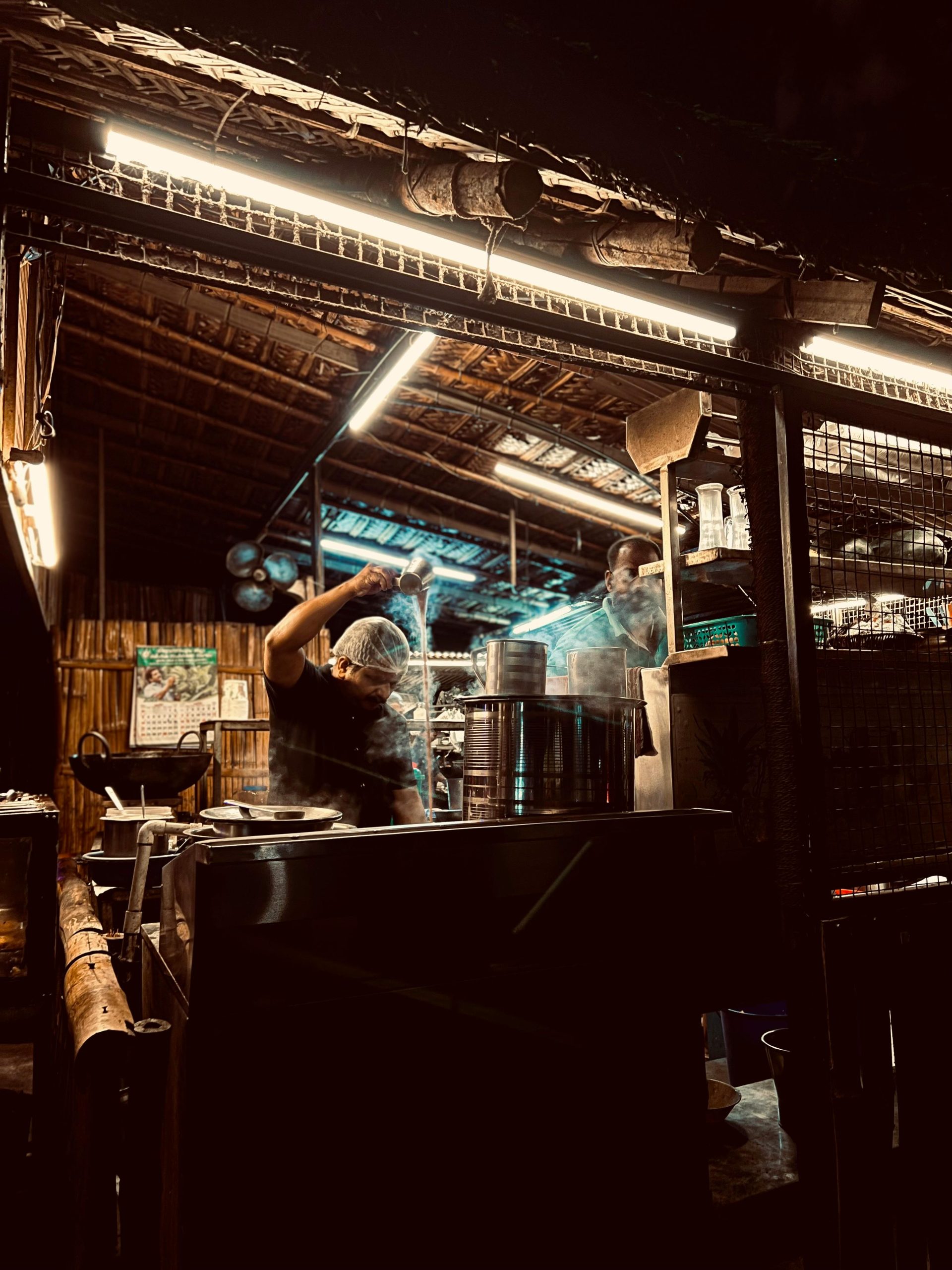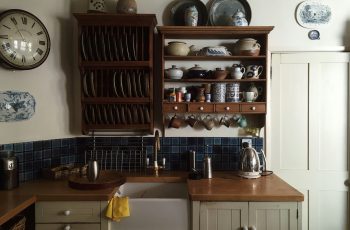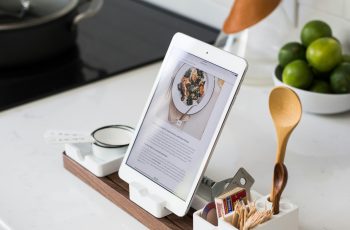Ad Blocker Detected
Our website is made possible by displaying online advertisements to our visitors. Please consider supporting us by disabling your ad blocker.
If you’re new to using a pressure cooker, you’re in the right place. In this article, we’ll explore some helpful tips and hacks that will make your experience with a pressure cooker a breeze. From choosing the right size cooker to understanding cooking times, we’ve got you covered. So get ready to take your cooking skills to the next level with these pressure cooker tips and hacks for beginners.
Choosing the Right Pressure Cooker
Consider the size and capacity
When choosing a pressure cooker, it’s important to consider the size and capacity that suits your cooking needs. Think about how many people you usually cook for and the types of dishes you typically prepare. Pressure cookers usually have a volume measurement, like quarts or liters, which tells you how much food it can hold. If you often cook for a large family or enjoy hosting dinner parties, a larger capacity pressure cooker would be ideal. On the other hand, if you mostly cook for yourself or a small household, a smaller size would be more suitable.
Look for safety features
Safety should be a top priority when selecting a pressure cooker. Look for models that come with safety features such as locking mechanisms, automatic pressure release valves, and built-in pressure indicators. These features not only ensure the safety of the user but also prevent accidents and explosions caused by excessive pressure buildup. It’s also essential to choose a pressure cooker with a well-built and sturdy construction to withstand the high pressure inside.
Check the material and build quality
The material and build quality of a pressure cooker can greatly impact its performance and lifespan. Stainless steel is a popular choice as it is durable, corrosion-resistant, and retains heat well. Aluminum pressure cookers are also common, but they may not be as long-lasting as stainless steel ones. Additionally, make sure to check for a thick and sturdy base that distributes heat evenly. It’s important to invest in a high-quality pressure cooker to ensure its longevity and to avoid any safety hazards.
Understanding Pressure Cooking Basics
Learn how pressure cooking works
Before diving into pressure cooking, it’s crucial to understand how it works. Pressure cooking involves sealing food and liquid inside a pot and heating it to create steam, which increases the pressure inside the cooker. The increased pressure then raises the boiling point of the water, resulting in faster cooking times. This process helps retain nutrients and flavors in the food, making pressure cookers a popular choice for those seeking efficient and nutritious cooking methods.
Familiarize yourself with pressure cooker terminology
Pressure cookers come with their own set of terminology that may be unfamiliar to beginners. Take the time to familiarize yourself with these terms to ensure you understand the instructions and recipes properly. Terms such as “natural pressure release,” “quick release,” and “trivet” will become second nature as you gain more experience with pressure cooking.
Know the different pressure release methods
Pressure release methods are crucial for safely opening a pressure cooker after cooking. Natural pressure release involves allowing the pressure to decrease naturally over time, which is often used for delicate foods and recipes that require a longer cooking time. Quick release, on the other hand, involves manually releasing the pressure using the pressure release valve. It’s important to follow the recipe instructions carefully to determine which method is appropriate for each dish.

Preparing Food for Pressure Cooking
Properly clean and dry the ingredients
Just like with any cooking method, it’s vital to start with clean and properly prepared ingredients. Wash fruits, vegetables, and meats thoroughly before placing them in the pressure cooker. It’s also important to dry the ingredients properly to avoid excess moisture in the pot, which could lead to watery dishes or improper pressure buildup.
Cut the ingredients into uniform sizes
When preparing ingredients for pressure cooking, it’s best to cut them into uniform sizes. This ensures even cooking and prevents some pieces from being undercooked while others are overcooked. For example, when making a stew, cutting the vegetables and meat into similar-sized pieces will allow them to cook at the same rate. This also helps to create a visually appealing final dish.
Use the right amount of liquid
Liquid is essential for pressure cooking as it creates the necessary steam and pressure. It’s important to follow the recipe instructions and add the recommended amount of liquid. Generally, around 1 cup of liquid is sufficient for most pressure cooker recipes, but it can vary depending on the dish. Remember that too much liquid can result in a watery final product, while too little liquid can prevent proper pressure buildup.
Using the Pressure Cooker
Learn the correct way to seal the pressure cooker
Sealing the pressure cooker properly is crucial for the cooking process. Most modern pressure cookers have a locking mechanism that ensures a tight seal. It’s important to align the lid properly with the pot and secure it tightly. The pressure indicator or valve should also be in the correct position according to the manufacturer’s instructions. Double-checking the seal will prevent any steam or pressure from escaping during cooking.
Set the cooking time and pressure level correctly
Different recipes require specific cooking times and pressure levels. It’s important to set these correctly according to the recipe instructions. Most pressure cookers have a pressure control knob or button that allows you to choose between high and low pressure settings. The cooking time can typically be adjusted using a timer or by following the recipe guidelines. Setting the time and pressure correctly will ensure that your food is cooked thoroughly and to perfection.
Avoid overfilling the pressure cooker
It is crucial not to overfill the pressure cooker beyond its maximum fill line. Every pressure cooker has a recommended maximum capacity, which should not be exceeded. Overfilling can lead to excess pressure buildup, leakage, or even potential accidents. Leave enough space for the food and liquid to expand during the cooking process to prevent any mishaps.

Managing Pressure and Temperature
Understand the pressure indicators
Pressure cookers come with pressure indicators that help you monitor the pressure inside the pot. There are typically two types of pressure indicators – visual indicators and pressure release valves. Visual indicators, such as a pressure gauge or pressure indicator pin, provide a clear visual representation of the pressure inside the cooker. Pressure release valves, on the other hand, release excess pressure if it exceeds safe levels. Understanding how to read and interpret these indicators is crucial for managing the pressure and ensuring safe cooking.
Adjust heat to maintain pressure
Maintaining a consistent pressure is important for successful pressure cooking. Once the pressure has been achieved, it’s essential to adjust the heat to maintain the desired pressure level. Most pressure cookers have a pressure regulator that allows you to control the heat intensity. High-pressure cooking requires a higher heat setting, while low-pressure cooking requires a lower heat setting. Adjusting the heat properly will ensure that the pressure stays within the recommended range.
Use natural pressure release for delicate foods
Some foods are more delicate and can be easily overcooked or become mushy if quick pressure release is used. In such cases, it’s best to opt for the natural pressure release method. This involves allowing the pressure to decrease naturally over time after the cooking process is complete. Natural pressure release allows the food to continue cooking in the residual heat without the risk of overcooking or losing textures. Recipes that require a longer cooking time tend to benefit from natural pressure release.
Preventing Common Issues
Prevent excessive foaming or spillover
Excessive foaming or spillover can occur while pressure cooking certain types of ingredients. To prevent this, make sure to leave enough headspace in the pressure cooker to accommodate the expansion of foamy ingredients. Adding a small amount of cooking oil or fat before pressure cooking can also help reduce the foam. Additionally, keeping a close eye on the cooking process and reducing heat as necessary can prevent excessive foaming or spillover.
Avoid clogging the pressure release valve
The pressure release valve is a crucial component of a pressure cooker, as it allows excess pressure to escape during the cooking process. It’s important to keep this valve clean and free from any blockages to ensure its proper functioning. Some recipes may release sticky substances or starch particles that can clog the valve. Regularly inspect and clean the pressure release valve to prevent any potential issues.
Deal with a stuck or difficult-to-open lid
Occasionally, the lid of a pressure cooker may become stuck or difficult to open after cooking. This can be due to the residual pressure inside the pot. In such cases, it’s important not to force the lid open. Instead, allow the pressure to release naturally and try opening the lid again. If the lid remains stuck, it’s best to seek professional help to address any potential issues with the pressure cooker.

Making the Most of Your Pressure Cooker
Experiment with different recipes
One of the joys of pressure cooking is its versatility and ability to cook a wide range of dishes. Don’t be afraid to experiment with different recipes and ingredients. From soups and stews to rice dishes and desserts, there are countless recipes available for pressure cookers. Step out of your comfort zone and explore new flavors and cooking techniques to make the most of your pressure cooker.
Convert traditional recipes for pressure cooking
If you have favorite traditional recipes, you can easily adapt them for pressure cooking. Some adjustments may be necessary, such as determining the appropriate cooking time and amount of liquid. However, pressure cooking can significantly reduce cooking times and enhance the flavors of your favorite dishes. There are also numerous resources and cookbooks available that provide guidance on converting traditional recipes for pressure cooking.
Use the pressure cooker for meal prepping
Pressure cookers are a great tool for meal prepping, allowing you to save time and effort during the week. You can prepare large batches of soups, stews, or even proteins like chicken or beans and portion them out for the week ahead. Pressure cookers make it easy to cook healthy and delicious meals in larger quantities, ensuring you have convenient and nutritious options readily available.
Cleaning and Maintaining Your Pressure Cooker
Follow proper cleaning instructions
Proper cleaning and maintenance are crucial for keeping your pressure cooker in good condition. Always refer to the manufacturer’s instructions for specific cleaning guidelines. Most pressure cookers have removable parts, such as the sealing ring and gaskets, that should be cleaned separately. Regularly washing the pot, lid, and other removable components with warm soapy water after each use will help prevent any buildup of residue or odors.
Remove and clean the pressure release valve regularly
The pressure release valve is a critical component that allows excess pressure to escape during cooking. It’s important to remove and clean the pressure release valve regularly to ensure it functions properly. Follow the manufacturer’s instructions for proper removal and cleaning techniques. Check for any debris or blockages and ensure it is thoroughly clean and free from any buildup.
Inspect and replace worn-out parts
Over time, certain parts of the pressure cooker may wear out or become damaged. It’s important to regularly inspect the rubber gaskets, sealing ring, and other components for signs of wear or damage. If any parts are worn or not functioning properly, they should be replaced immediately. Continually maintaining and replacing worn-out parts will ensure the longevity and safe operation of your pressure cooker.
Troubleshooting Pressure Cooker Issues
Identify and fix common pressure cooker problems
Despite proper care and maintenance, pressure cookers may encounter common issues. Some common problems include trouble reaching or maintaining pressure, steam leaks, or uneven cooking. It’s important to familiarize yourself with these common issues and the potential solutions. Consulting the manufacturer’s troubleshooting guide or reaching out to customer support can often help in resolving these problems.
Deal with steam leaks or hissing sounds
Steam leaks or hissing sounds can indicate a problem with the pressure cooker’s seal or pressure release valve. Check that the lid is properly aligned and securely locked in place. If the issue persists, inspect the sealing ring for any damage or wear. The pressure release valve should also be examined for any blockages or defects. Taking the necessary steps to address these issues will ensure that the pressure cooker operates safely and efficiently.
Seek professional help if needed
If you encounter persistent issues with your pressure cooker or are unsure about a particular problem, it’s best to seek professional help. Manufacturers often have customer support services that can provide guidance or arrange repairs. Safety should always be the top priority, so if in doubt, it’s better to consult a professional rather than attempting to fix the issue yourself.
Safety Tips for Pressure Cooking
Read the user manual and follow guidelines
When using a pressure cooker, it’s essential to read and understand the user manual provided by the manufacturer. The manual contains crucial safety guidelines and usage instructions specific to that model. It’s important to follow these guidelines to ensure safe operation and prevent accidents. Familiarize yourself with all the safety features and precautions mentioned in the user manual.
Release pressure with caution
Before opening the pressure cooker, it’s crucial to release the pressure correctly and with caution. Never attempt to force open the lid while there is still pressure inside. Follow the appropriate pressure release method mentioned in the recipe or user manual. Quick-release methods may result in a sudden release of steam, so ensure that your face and hands are away from the steam vent to prevent any burns or injuries.
Keep children and pets away from the pressure cooker
Pressure cookers generate high heat and pressure, making it important to keep children and pets at a safe distance while cooking. The exterior of a pressure cooker can become extremely hot during the cooking process, posing a burn risk to curious little hands. It’s best to set up a safe cooking area away from high traffic areas and ensure that children and pets are supervised and kept away from the pressure cooker at all times.
Pressure cooking can be a game-changer in the kitchen, providing quick and efficient cooking while preserving flavors and nutrients. By choosing the right pressure cooker, understanding the basics of pressure cooking, and following proper techniques and safety guidelines, you can unlock the full potential of this versatile kitchen appliance. So dive into the world of pressure cooking, experiment with new recipes, and enjoy the convenience and delicious results it has to offer.

